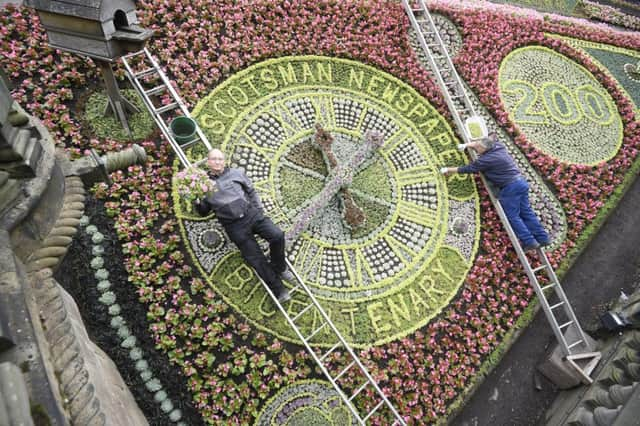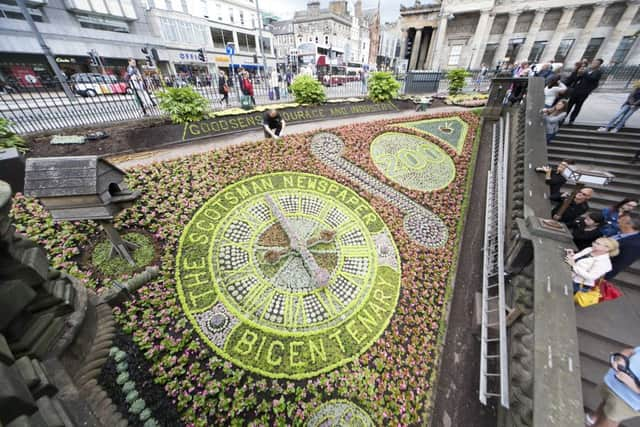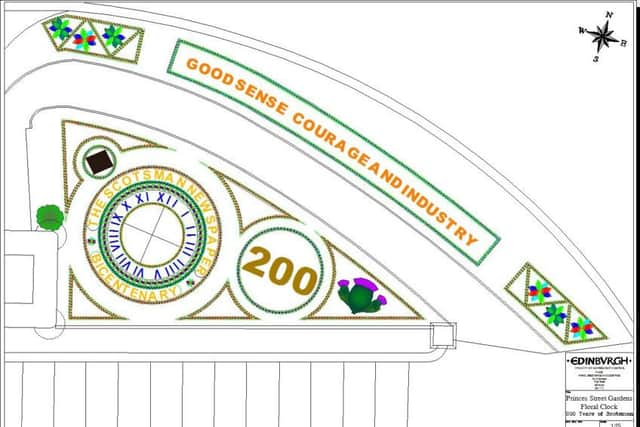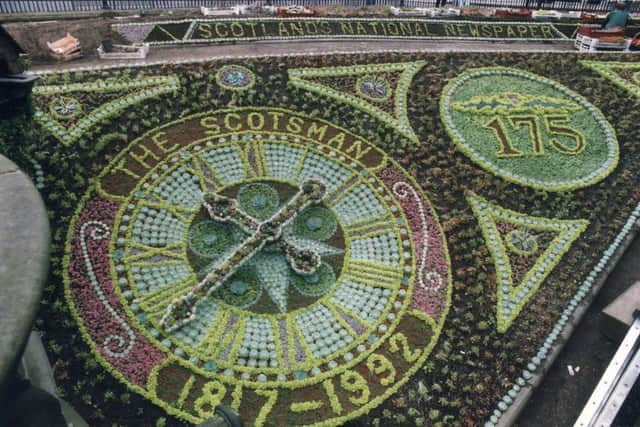Historic floral clock marks The Scotsman's 200th year


Next Thursday the city’s world-famous floral clock will officially reveal its design for 2017. This year it celebrates the 200th anniversary of The Scotsman newspaper – complete with a thistle emblem made of plants in the bottom left hand corner of the display in tribute to the symbol on the publication’s iconic masthead.
It is the first time any organisation has been honoured by being featured twice on the floral clock – The Scotsman’s 175th anniversary was celebrated in 1992. The newspaper sits alongside others honoured who include Robert Louis Stevenson and the Queen, who was featured in the year of her Golden Jubilee. Frank O’Donnell, The Scotsman’s 27th editor, and Edinburgh Lord Provost councillor Frank Ross will take their place among visitors and tourists as the new display, designed jointly by Edinburgh City Council and Scotsman Publications, makes its official debut.
Advertisement
Hide AdAdvertisement
Hide AdComposed of around 35,000 plants, the floral timepiece – almost 12 feet in diameter – also features the swords “good sense, courage and industry”, picked out in pyrethrum golden moss – echoing the paper’s founders’ commitment to quality journalism.


The plants, tended over the winter at the city’s Inch nursery, include blue kleinia, black ophiopogon grass, spiky succulent agaves, sedum, echeveria, and saxifraga.
The clock – believed to be the oldest floral clock in the world – was created in 1903 by John McHattie, who was the Edinburgh parks superintendent.
The original mechanism, which came from a redundant turret clock, was designed by Edinburgh clockmakers James Ritchie whose firm still maintains it.
A cuckoo clock was added featuring a mechanical “cuckoo” popping out on the hour and quarter-hours, to the delight of hundreds of thousands of visitors who visit the landmark annually, standing on the adjacent imposing stone staircase taking photos and selfies. The bird’s volume can now be turned up and down and the recording of the bird includes the sound of the rustle of trees at the beginning of the recording.


The cuckoo sound is “switched on” at 6:30am every morning and off around 9pm daily. The clock has recently been upgraded, but until 1972 it operated mechanically, and had to be wound daily.
David Dorward, botanical services team leader, who along with fellow council gardeners have spent more than a month planting the clock, said: “I love what I do. Creating something from a bit of ground and see it developing before your eyes every day.
Advertisement
Hide AdAdvertisement
Hide Ad“It’s great listening to people, especially those who have moved to places like the US or New Zealand saying, ‘Oh, I remember coming here as a child’.”
The job, however, is not without its challenges.


Mr Dorwood said that one member of the team has to regularly spend at least half a day lying flat on an aluminium ladder using shears to trim the clock and do a spot of weeding and watering.
“I choose people who have an aptitude for it,” he said.
Maintenance of the plants over the summer is another tricky task: “When the elm tree seeds fall on the clock, we have big wood pigeons coming in and pecking away at them and they can flatten some of the plants. But the clock and its plants should stay in excellent condition until the first frost in September or October.”